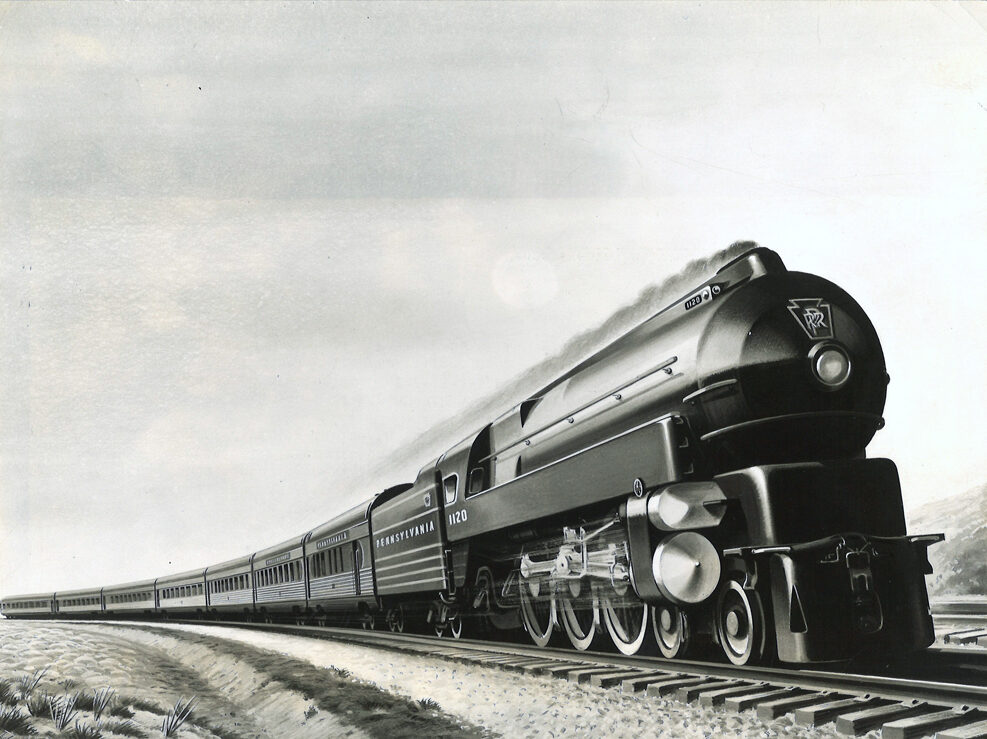
We are exploring ideas on streamlining steam locomotives.
During the deepest darkest days of the Great Depression — the economic shock that impacted most of the world from 1929 to 1939 — industrial and political leaders sought out new products, services, and events. They were looking for a means to create jobs, increase sales, and return to prosperity. Hold that thought.
From April to October 1925, the Exposition Internationale des Arts Décoratifs et Industriels Modernes was presented in Paris. This World’s Fair showcased the new Style Moderne that was taking over European architecture, interior decoration, furniture, glass, jewelry, and other decorative arts. From this exposition — translated: The International Exhibition of Modern Decorative and Industrial Arts — came the Art Deco school of design. The style featured fine craftsmanship and rich materials combined in designs that emphasized strong lines, soft corners, and practicality. Artists applied Art Deco principles to buildings, bridges, cars, clothing, everyday objects, and trains. They created jarring, attention-getting items because the style was new.
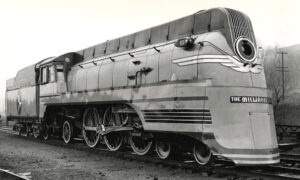
Following the Paris exhibition, Art Deco captured the fancy of many as the latest, must-have style. And then — wham — the Great Depression stunned the world to its economic foundations beginning in 1929. By March 4, 1933, the day Franklin D. Roosevelt became the U.S. president, the Depression had reached one of its lowest points. Unemployment stood at 24.9%, the banking system had collapsed, factories closed, and going hungry was common. The railroad industry was hard hit. By some estimates, over a quarter-million teenagers hoboed their way around the country in 1933. Industry-wide revenue fell by 50% from 1928 to 1933. Over 70,000 miles (30%) of the U.S. railroad system was in receivership by 1937. It was time for the Art Deco style to play its role on the American rails.
To introduce a new, fast, stylish train in the Great Depression was a risk. Would the new design be economical? Would it attract public interest? Would tickets be affordable? A plethora of questions were faced, but the rewards for the risk turned out to be significant. Internally, railroads struggled with the idea of streamlined trains.
For the mechanical department, streamlining meant extra sheet metal to be negotiated before maintenance could be completed. Research indicated that a streamlined locomotive nose of parabolic shape would reduce air resistance by two-thirds at 60 mph. However, unless traveling over 100 mph, this reduction meant little in comparison with the train’s weight, which offered the greatest resistance. Additionally, research found that on heavyweight passenger trains, the brake rigging, battery boxes, water tanks, and other appliances hung below the floor level, combined with gaps between the cars, accounted for nearly two-thirds of the air resistance. The solution — from the mechanical perspective — was to produce a lightweight, high-powered train on which all the mechanical parts were easy to access. Mechanical realities and the temperament of the artistic did not always agree and consider the other’s needs.
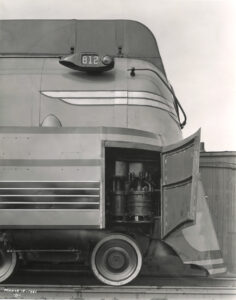
For the passenger department, streamlining meant style — attention-grabbing, eye-popping, sleek, colorful design — the likes of which the public had not seen before. Otto Kuhler, designer responsible for numerous streamlined locomotives including the Milwaukee Road Hiawatha 4-4-2s, stated in his autobiography, “My Iron Journey,” that “ … Speed alone is not enough … Then let me design a slower train. Let me paint in it … colors, offer the public interior beauty and comfort suggested by the exterior color scheme, and put an exciting new streamlined engine on the front. I am willing to bet that my train will be packed and make money.”
From this perspective, streamlining was style via sheet metal with little regard for science or mechanical concerns. As one railroad official of the period stated, “The whole point of streamlining is not to lower air resistance but to lower passenger resistance.”
In the late 1920s and early 1930s, the railroads did conduct scientific tests to measure air resistance and the effects of streamlining. The Burlington Route turned to the Massachusetts Institute of Technology to refine the shape of its first Zephyr. Alco conducted studies in New York University’s wind tunnel. Other tests were completed at the University of Illinois and Canada’s National Research Laboratories.
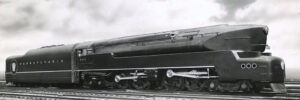
At the same time, designers like Kuhler and contemporaries Raymond Loewy — Pennsylvania Railroad GG1, K4, T1, and Broadway Limited — and Henry Dreyfuss — New York Central Mercury and 20th Century Limited — mostly disregarded the science to pursue striking artistic designs. All three believed a train’s streamlined design should include the exterior and interior in one cohesive package. Dreyfuss, by his own admission, felt the interior design was of far greater importance than the exterior streamlining.
What resulted were trains that challenged mechanical departments and captivated the public. Through the 1930s, streamlined trains like the Milwaukee Road’s original Hiawatha, Southern Pacific’s Coast Daylight, and the Union Pacific’s M-10000, to mention a few, garnered extensive publicity for their owners and builders. The public bought tickets and filled these new and novel streamlined works of art to capacity. For now, Kuhler was right: while speed was important, the fresh Art Deco designs attracted passengers.
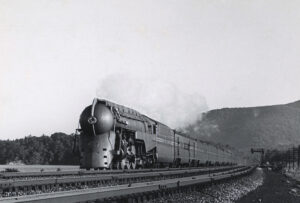
There is one additional consideration in the 1930s streamline frenzy. It can be argued that streamlining steam locomotives was a lifeline, of sorts, for the builders. The Union Pacific’s 1934 M-10000 was powered by a gas-distillate, internal-combustion engine. The Burlington Zephyr, also introduced in 1934, became the first diesel-electric streamliner. Both trains received considerable attention as forward-thinking vehicles when presented to the public. Yet, Alco argued that based the cost per unit of horsepower, a streamlined steam locomotive was about half the purchase price of a new diesel unit. Plus, a new streamlined steam locomotive would project the same progressive image as a diesel locomotive.
The argument worked for a few years, but the lower maintenance cost of diesel power won out. From an artistic view, the steam-to-diesel transition offered new opportunities that can be seen in both pre- and post-World War II streamliners. The Union Pacific’s 1936 City of San Francisco, the Santa Fe’s 1937 Super Chief, and the Burlington’s 1949 California Zephyr, all popular trains, featuring sleek new interior and exterior streamlined designs … powered by diesel locomotives.
Art Deco streamlined designs served the railroads, builders, and public well. These concepts died out, however, with the decline of passenger trains. While contemporary streamlined rail passenger vehicles present sleek, aerodynamically-advanced exterior shapes, the interiors, while comfortable and utilitarian, offer little of the flare and sophistication found in the streamliners of the 1930s.
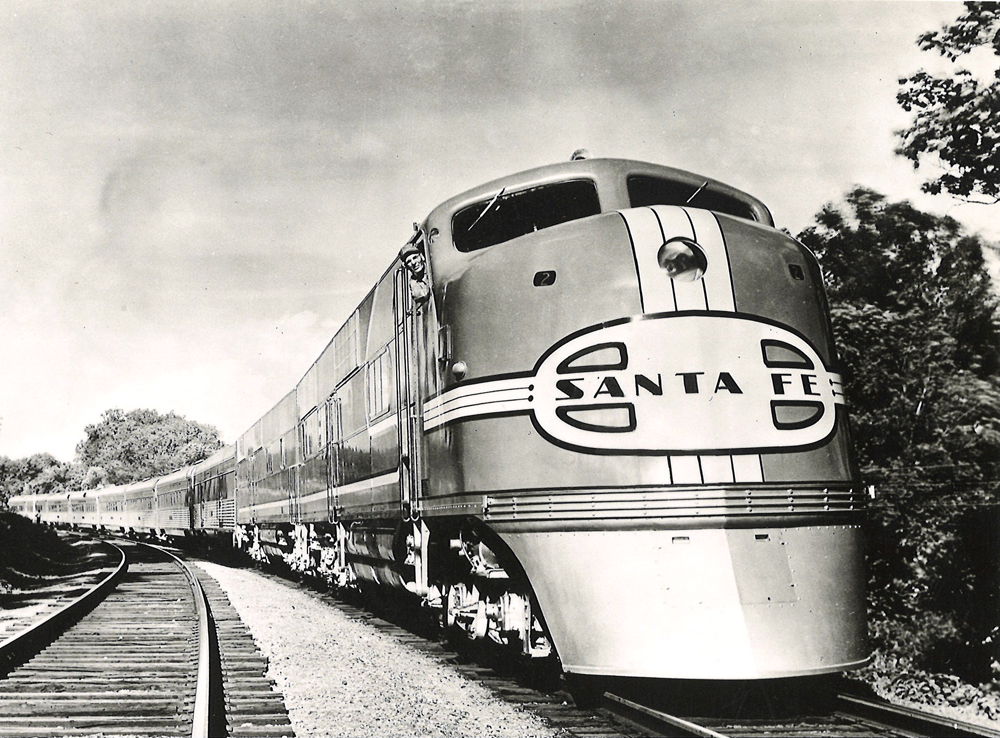
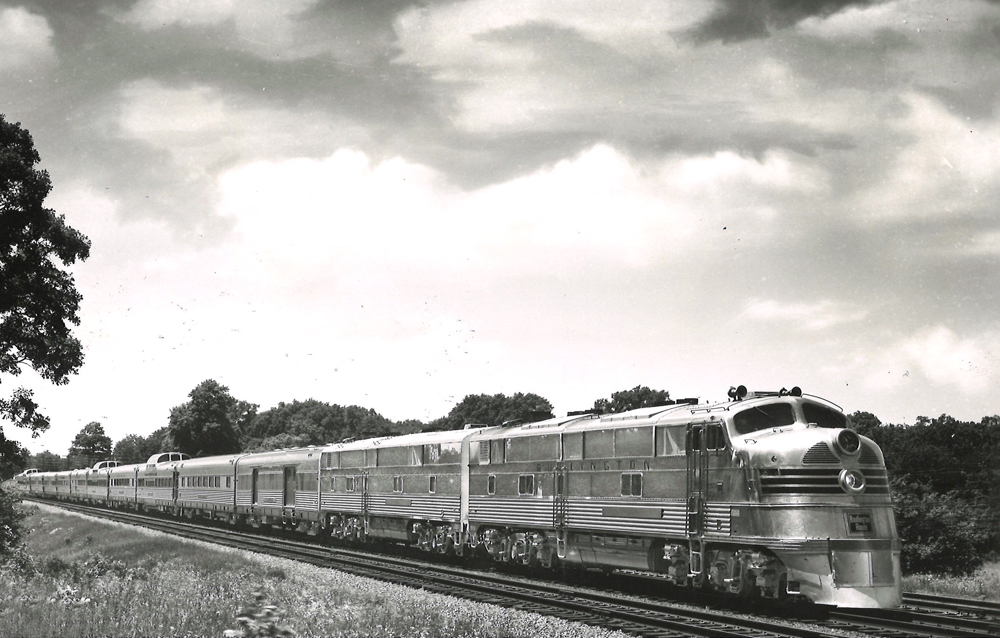















Interesting article although I would argue that the first generation of industrial designers did not work in the art deco style per se but rather helped to develop a bold, simplified style best described as “streamline moderne”. This style was perhaps similar in ethic to art deco in that it was a new style inspired by abstracted natural forms, but itself was informed by the science of the streamlined form (ideas of aero and hydrodynamics in nature) combined with new materials, engineering, and industrial production methods. The streamline moderne emphasizes speed and motion and generally lacks the abstract surface ornamentation that is such a major characteristic of art deco design.